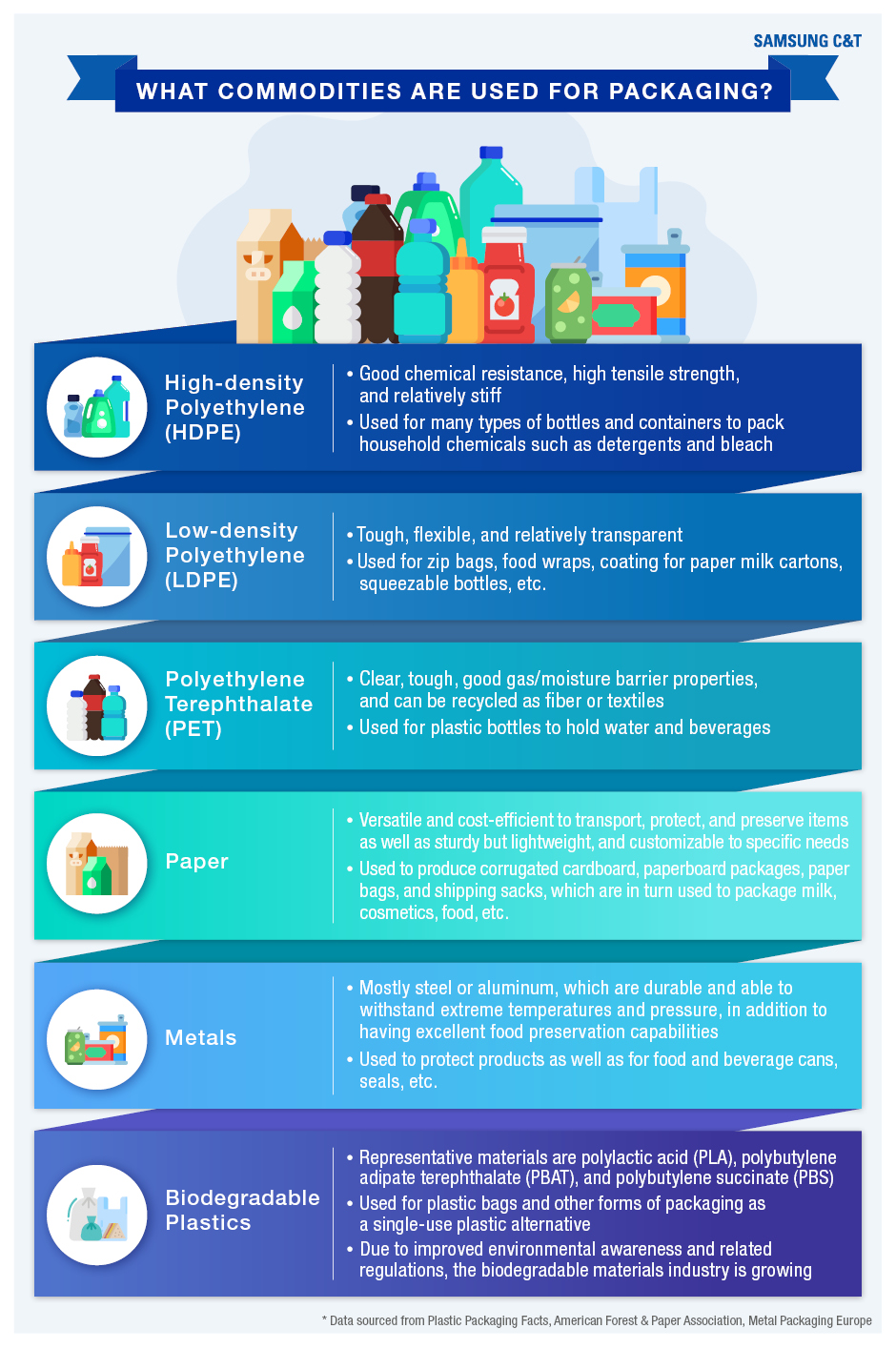The rise of the stay-at-home economy has been felt worldwide amid the prolonged effects of the COVID-19 pandemic. Previously, we saw how this has impacted the commodities involved in making the everyday items all around us.
It has also become clear that the stay-at-home economy is influencing the way the things we need are packaged – creating a next normal for the packaging industry. This article will look at this change and the knock-on effects on trading-related commodities.
Delivering a new normal to our homes
Most of us will recognize from our own lives how home deliveries of everything from food to necessary household items have become a daily event since the emergence of the stay-at-home economy.
Imagine your first delivery of the day is already waiting for you when you wake up – a carton of milk! In fact, traditional delivery items like milk have been making a comeback. Cartons such as those containing milk are typically made of paperboard layered with polyethylene. In addition to milk, overall grocery deliveries have increased. The packaging for these can vary, but low-density polyethylene (LDPE) and polypropylene are common materials used for plastic food containers. These same materials can also be applied to containers for takeaway meals, which many people have been choosing when they cannot get to a supermarket or a restaurant. In addition, some takeaways like pizza rely on cardboard packaging and some others require aluminum foil.
It is likely that you would also find another package on your doorstep on this imaginary day, especially considering the ongoing e-commerce boom. DIY, health, and electronic products have all seen a noticeable growth in consumer interest. A non-food package is usually shipped in a corrugated cardboard box, with the product further protected by plastic wrapping made of LDPE, which is also used to make bubble wrap. Below, you can view some of the main commodities that are transformed into packaging materials.
The takeaway for market watchers
Overall, the global packaging market is expected to grow to USD 1,012.6 billion this year from USD 909.2 billion in 2019.
We saw in the first part of this series how demand is rising for commodities involved in making plastics, and that is also true of the synthetic resins used for product wrapping. For LDPE in particular, the stay-at-home economy has helped to counter some of the pandemic’s negative impact. Cardboard and paperboard have also seen significant growth, in addition to other materials like aluminum foil.
As pandemic-related hygiene requirements and the rapid rise of e-commerce have heightened environmental concerns about packaging, sustainability remains a major priority for consumers going forward. We have witnessed the growth of the biodegradable plastic packaging market, which is expected to expand more than twofold between 2019 and 2025, as well as advice to rethink packaging design to support recycling.
Samsung C&T’s part in the packaging trend
As a global trading company, Samsung C&T is also making efforts to meet the increased demand for packaging materials. Among them, the company participates in the trading of synthetic resins and paper.
The company has traded synthetic resins including HDPE, LDPE, and PET over the last 30 years through active overseas marketing in cooperation with domestic and overseas petrochemical companies.
Also, Samsung C&T supplies scrap paper for the production of corrugated cardboard and buffer materials, which are considered eco-friendly. The company additionally has interest in another form of sustainable packaging: biodegradable plastic bags, which have remarkable potential. It participates in markets for biodegradable materials such as polylactic acid (PLA), polybutylene adipate terephthalate (PBAT), and polybutylene succinate (PBS).
To unpack all of this, the last year has highlighted how some industries remain important – or even more so – when people are forced to socially distance. Considering the need for a sustainable future, it is time to continue efforts to develop eco-friendly packaging materials as well as to reduce packaging overall.









